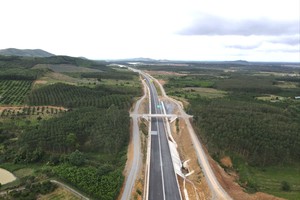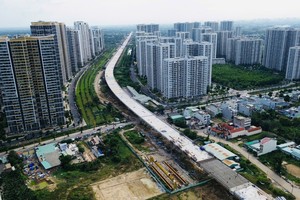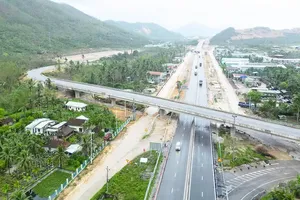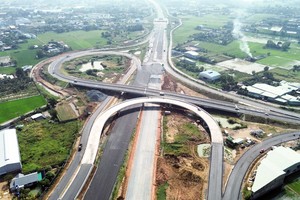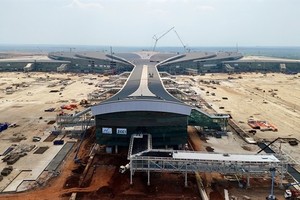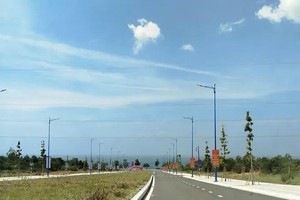)
The 2025 dry season is expected to arrive earlier than in previous years. In response, authorities, relevant agencies, and local communities in the Mekong Delta are swiftly putting essential measures into action to mitigate potential damage.
As forecasted by meteorological experts, the 2025 dry season, drought, and salinity intrusion in the Mekong Delta came earlier.
In early February 2025, the Irrigation Department of Soc Trang Province reported that the salinity levels on the Hau River in the Dai Ngai area, located approximately 30 kilometers from the river mouth, reached 7.8‰, which is 4.5‰ higher than the corresponding period last year. Additionally, in Song Phung Commune, also within Long Phu District and about 41 kilometers from the river mouth, salinity was recorded at 4.3‰, an increase of 3.3‰ compared to the same timeframe last year.
It is forecast that by February 12, the natural disasters resulting from salinity intrusion in the Hau River and My Thanh River are likely to reach level I.
Director Dang Hoang Lam of the Ben Tre Province Hydrometeorological Station said that a salinity level of 4 parts per thousand (‰) has been recorded in the districts of Chau Thanh, Mo Cay Bac, and Binh Dai.
On the Ham Luong River, salinity has penetrated to Thanh Son 4 Hamlet, Thanh Tan Commune of Mo Cay Bac District, 51.2km from the river mouth. Meanwhile, the salinity level of 4 parts per thousand (‰) has reached Cau Cong Hamlet in Nhuan Phu Tan Commune of Mo Cay Bac District which is located 51 kilometers from the mouth of the Co Chien River.
Furthermore, by mid-February 2025, about 8km from the Co Chien River mouth, salinity can reach 21‰.
The Tien Giang Hydrometeorological Station has issued a concerning forecast regarding salinity intrusion in the upcoming dry season of 2024-2025. According to their projections, the salinity levels are expected to be higher than the average of previous years.
Numerous farming households in the Mekong Delta region are increasingly concerned about the availability and quality of water sources for agricultural production. Recently, farmer Nguyen Van Be Chinh in Tan Thieng Commune in Cho Lach District of Ben Tre Province, along with his family members, has been measuring salinity levels in the river twice daily, both in the morning and afternoon. In 2020, his family suffered a significant loss of 1.2 hectares of durian trees, which were just beginning to bear fruit, due to irrigation with saline water, resulting in losses amounting to hundreds of millions of Vietnamese dong.
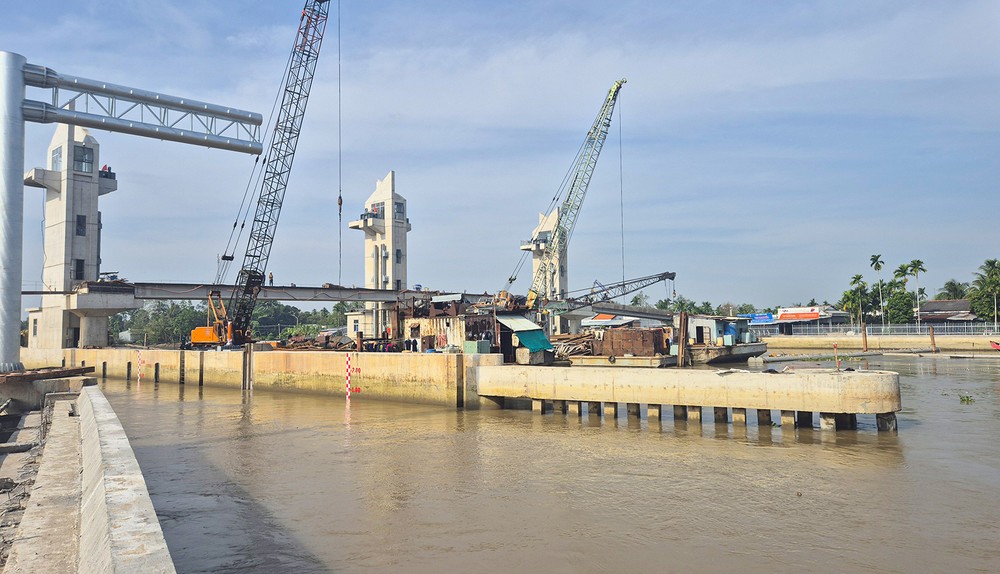
In addition to monitoring the salinity of the river, Mr. Chinh's family is investing in building a water reservoir in the garden with a capacity of over 1,000 cubic meters to cope with the upcoming severe drought and salinity. The amount of water in the reservoir is only enough to irrigate the fruit garden for more than 2 months. If the drought and salinity persist, the risk of water shortage is very high.
In Ca Mau province and several areas including Go Cong of Tien Giang Province, Vinh Chau of Soc Trang Province, Hong Dan of Bac Lieu Province, Thoi Binh of Ca Mau Province, and Go Quao of Kien Giang Province, the canal systems in agricultural fields have been progressively drying up since late January 2025. In response, residents have urgently undertaken the renovation of garden ditches, constructed temporary reservoirs, and stored fresh water.
Farmer Cong from Go Quao said that local inhabitants have implemented solutions to cope with the natural disaster early with the hope that this year's dry season will result in less loss of rice, vegetables, and fruit trees compared to last year.
Hau Giang is actively pursuing measures to address the challenges of drought and salinity during the 2025 dry season, with projections indicating that between 90,000 and 110,000 hectares of rice, fruit crops, and aquaculture could be impacted.
The unique position of Ca Mau Province as the sole coastal area in the Mekong Delta that lacks access to fresh water from significant upstream rivers presents a significant challenge for both local authorities and residents, particularly during the dry season. Resident Danh Phuong in U Minh District of Ca Mau Province revealed that dwellers in the region mainly use groundwater and rainwater for daily activities.
To cope with the drought and salinity in the 2025 dry season, since the end of 2024, his family members and hundreds of local households have bought barrels and built tanks to store rainwater. However, in recent months, there has been little rain, so the amount of stored water is insignificant. Worried about the lack of water for use, many households have dug more wells, Mr. Phuong said.
In response to the aforementioned circumstances, the People's Committee of Ca Mau Province has instructed the Center for Clean Water and Rural Environmental Sanitation to promptly initiate the development of six centralized rural water supply projects. This initiative will be supported by a budget of VND180 billion sourced from the Ministry of Agriculture and Rural Development along with local counterpart funding.
In Ben Tre, Mr. Truong Van Trong, a resident of Hung Le Commune in Giong Trom District, recounted how his family built a concrete tank to collect and store over 30 cubic meters of rainwater following the severe drought and salinity intrusion of the 2023-2024 dry season. Despite this effort, Mr. Trong expressed concern that the stored water may not be sufficient for his family of five if the dry season extends. To supplement their water supply, he is collaborating with neighboring households to raise funds for digging additional wells. Even if this well water proves to be contaminated with alum and salt, it can still be used for bathing, washing, and irrigation, thus conserving the cleaner rainwater stored in the tank for essential needs.
Worse, provinces in the Mekong Delta are facing forest fires - a seasonal summer threat forcing authorities to take decisive steps to manage the growing danger.
The Kien Giang Provincial Forest Protection Department reported that, in anticipation of severe heat and extended drought conditions expected during the 2025 dry season, a survey has revealed that over 40,000 hectares of forest across the province are at a high risk of fire. Specifically, Phu Quoc City accounts for approximately 16,000 hectares, U Minh Thuong District around 10,200 hectares, An Minh District about 2,783 hectares, Hon Dat District roughly 7,475 hectares, and Kien Luong District about 2,249 hectares.
In response, Vice Chairman Giang Thanh Khoa of the Kien Giang Provincial People's Committee has signed a decision to approve a comprehensive forest fire prevention and response plan, which includes a budget exceeding VND17 billion . The province has called upon the Department of Agriculture and Rural Development, relevant agencies, and forest owners to ensure that the necessary investments for fire prevention and control measures are met, and to organize personnel, vehicles, and equipment to maintain a continuous 24-hour readiness.
